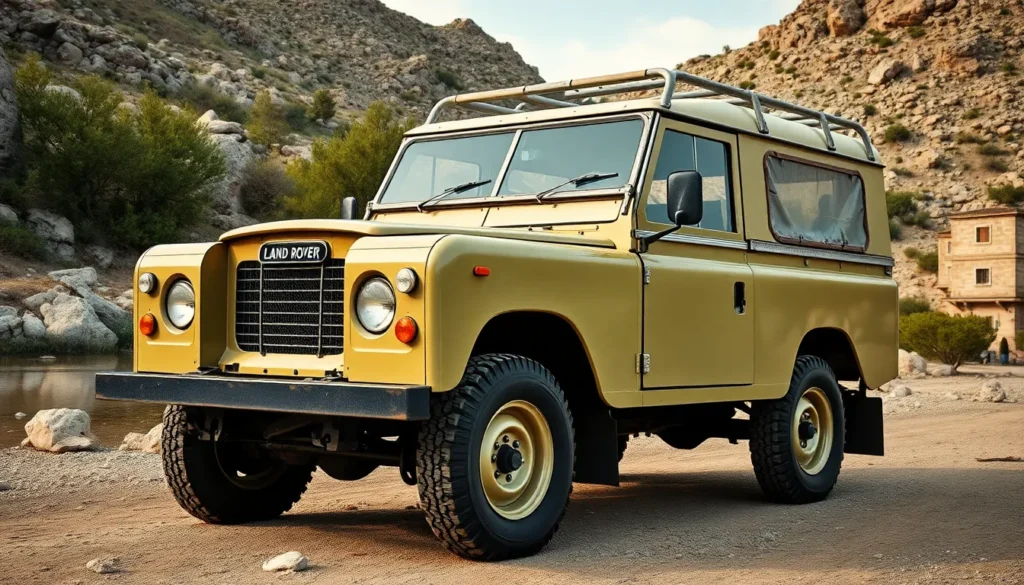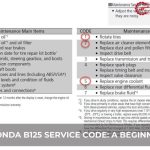We’ve all heard of iconic off-road vehicles that shaped automotive history, but the Land Rover Santana stands out as one of the most fascinating chapters in 4×4 evolution. This Spanish-built marvel emerged from a unique licensing agreement that brought British engineering prowess to the Iberian Peninsula, creating something truly special in the process.
When Land Rover partnered with Metalúrgica de Santa Ana (Santana) in the 1950s, they unleashed a vehicle that would dominate Spanish terrain for decades. The Santana didn’t just copy its British cousin – it evolved into something uniquely suited for Mediterranean conditions and Spanish military needs.
What makes the Land Rover Santana so compelling isn’t just its rugged reliability or distinctive Spanish flair. It’s the story of how two nations collaborated to create an off-road legend that continues to capture enthusiasts’ hearts today. We’re diving deep into this remarkable vehicle’s history, variants, and lasting impact on the automotive industry.
What Is the Land Rover Santana?
The Land Rover Santana represents a Spanish manufactured variant of the iconic British Land Rover Series, produced under license by Metalúrgica de Santa Ana from 1958 to 1983. This robust off-road vehicle adapted British engineering principles to Mediterranean conditions while maintaining the legendary durability that defined the Land Rover brand.
History and Origins
Metalúrgica de Santa Ana secured manufacturing rights from Rover Company Limited in 1956 to produce Land Rover vehicles in Spain. Production commenced in Linares, Jaén in 1958 with the Series II model, which featured locally sourced components including Spanish steel and specialized modifications. The Spanish military required vehicles capable of operating in extreme heat and rough terrain, driving exact design adaptations that distinguished Santana models from their British counterparts.
Manufacturing techniques incorporated Spanish metalworking expertise with British mechanical engineering, creating vehicles that exceeded original durability standards in several key areas. Local suppliers provided 85% of components by 1962, establishing a comprehensive domestic supply chain that reduced costs and improved delivery times.
The Partnership Between Land Rover and Santana
Rover Company granted Metalúrgica de Santa Ana exclusive rights to manufacture and distribute Land Rover vehicles across Spain, Portugal, and several Latin American markets. This licensing agreement transferred complete technical specifications, manufacturing processes, and quality control standards to the Spanish facility.
The partnership evolved beyond simple manufacturing as Santana engineers developed unique modifications including reinforced chassis designs, improved cooling systems, and specialized electrical components. These innovations fed back into Land Rover’s global development program, particularly for vehicles destined for hot climate markets.
Technical collaboration continued throughout the 25-year partnership, with British engineers providing ongoing support while Spanish technicians contributed practical improvements based on field testing results. The relationship produced over 130,000 vehicles across multiple series, establishing Santana as a important contributor to Land Rover’s international expansion strategy.
Design and Build Quality
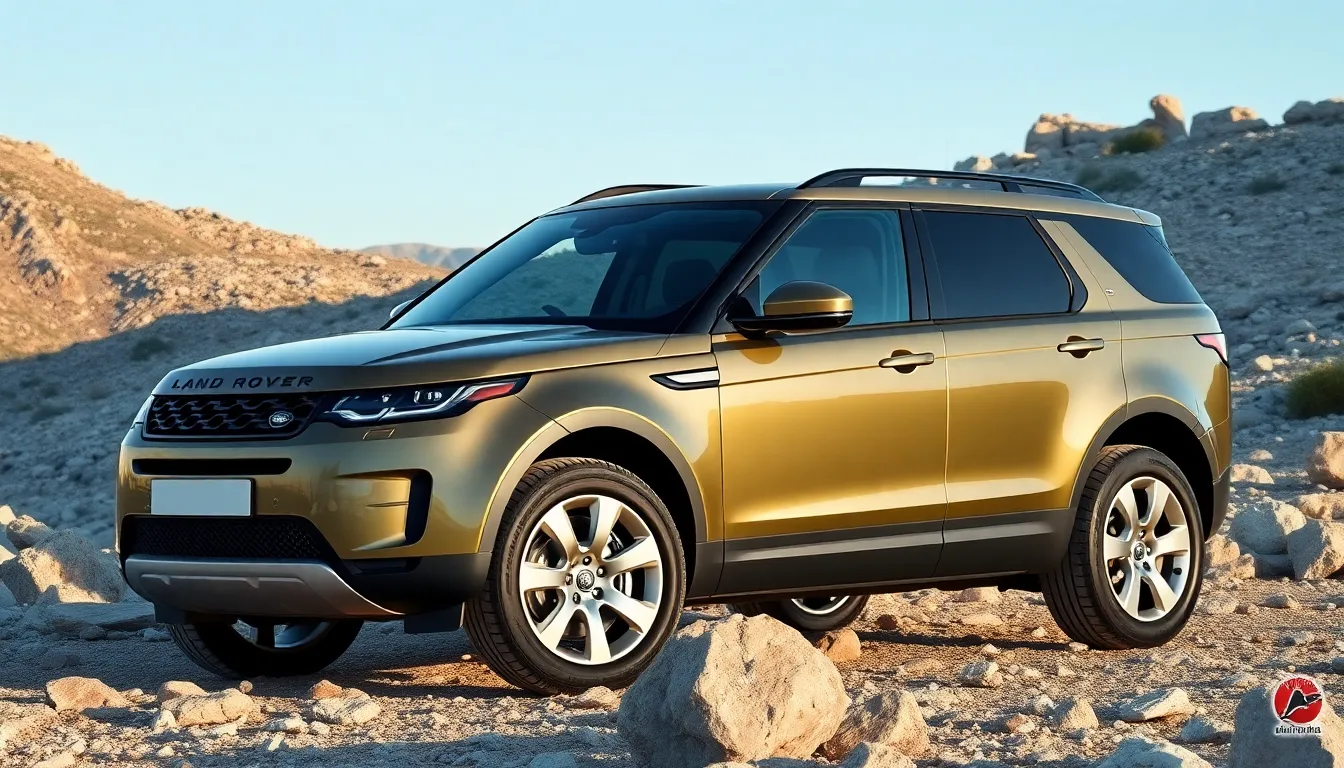
The Land Rover Santana’s design philosophy emphasized robust construction over aesthetic refinement, delivering a utilitarian vehicle that excelled in harsh Mediterranean and military environments. Spanish engineers at Metalúrgica de Santa Ana reinforced the original British framework with locally sourced materials and enhanced structural elements.
Exterior Features and Styling
We find the Santana’s exterior design retained the classic Land Rover proportions while incorporating distinct Spanish modifications. The vehicle featured reinforced steel body panels manufactured in Spain using thicker gauge materials than the original British specifications. Chrome bumpers appeared on civilian models while military variants received painted steel protection systems.
The front grille maintained the traditional horizontal slat configuration but used Spanish-produced components with slightly different mounting systems. Headlight assemblies integrated locally sourced Lucas-compatible units positioned in the standard rectangular housings. Side panels displayed the characteristic Land Rover profile with minimal body ornamentation except for essential badges and identification markers.
Window configurations included fixed glass panels in the rear quarters and removable canvas or metal tops depending on the exact model variant. The tailgate design followed British specifications but incorporated Spanish manufactured hinges and latching mechanisms. Paint options remained limited to practical colors including olive green for military applications and basic civilian colors like white and light blue.
Interior Comfort and Functionality
We observe that Santana interiors prioritized functionality over luxury appointments throughout the production run. Seating consisted of basic vinyl covered bench seats in the front with fold down rear benches that accommodated up to 8 passengers in the long wheelbase variants. Dashboard construction used painted metal with minimal padding and featured Spanish manufactured gauge clusters displaying metric measurements.
The instrument panel layout mirrored British designs but incorporated locally sourced switches and controls that proved more resistant to dust and moisture infiltration. Floor coverings used rubber matting instead of carpeting to help easy cleaning after off road operations. Storage compartments remained minimal with basic door pockets and a simple glove box arrangement.
Heating systems operated through a basic fresh air ventilation design without complex climate control features. Window mechanisms used manual winding systems throughout the range with no power assisted options available. The overall interior space maximized cargo capacity while maintaining essential driver visibility and basic comfort requirements for extended operational periods.
Performance and Capabilities
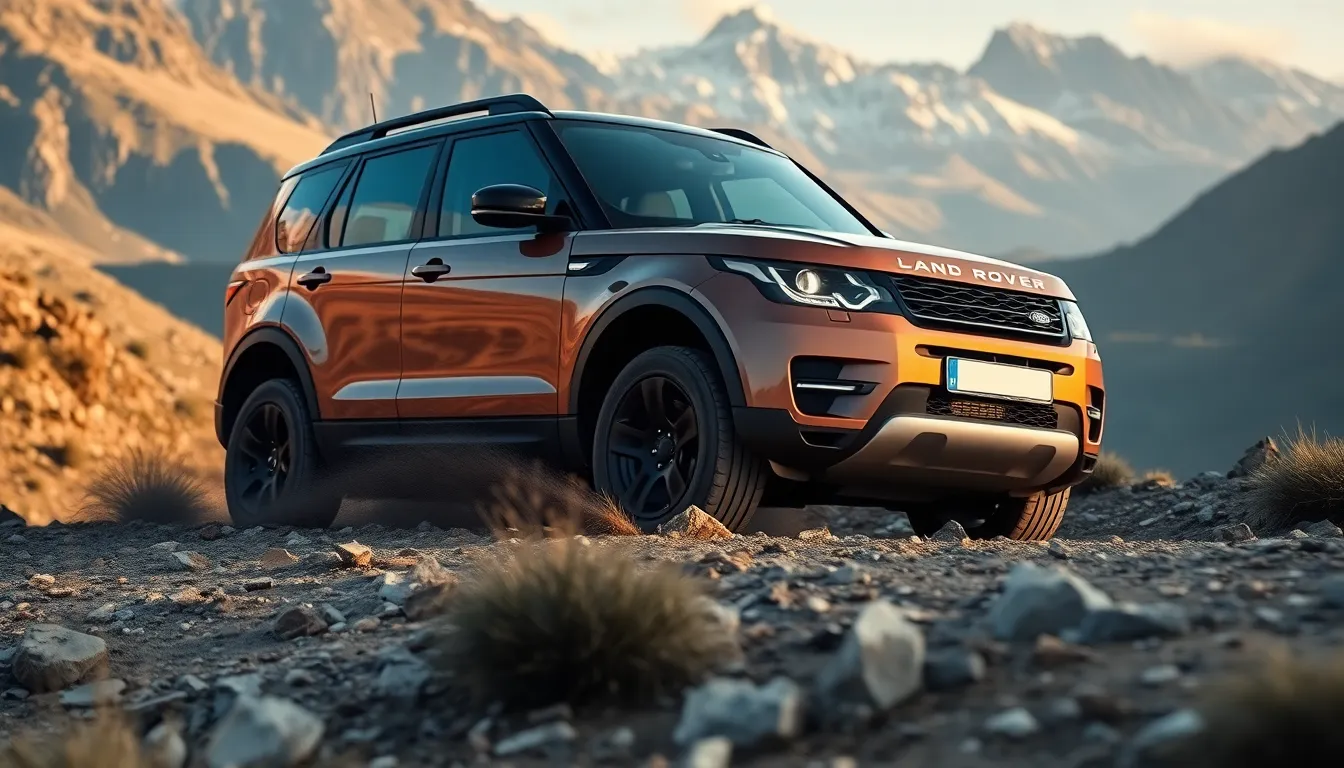
The Land Rover Santana’s performance credentials stem from its adaptation of proven British engineering enhanced with Spanish modifications for demanding conditions. This robust vehicle delivered exceptional capabilities both on challenging terrain and standard roadways.
Engine Options and Power
Santana models featured multiple engine configurations throughout their 25-year production run. The early Series II variants utilized the 2.25-liter petrol engine producing 77 horsepower, while later models incorporated a 2.25-liter diesel option generating 62 horsepower for improved fuel economy.
Spanish engineers introduced a unique 3.0-liter Perkins diesel engine in select military variants, delivering 95 horsepower and 180 lb-ft of torque. This powerplant provided superior low-end torque characteristics essential for heavy-duty applications and extreme operating conditions.
The transmission systems included a 4-speed manual gearbox with synchronized second, third, and fourth gears. High and low-range transfer cases enabled drivers to select appropriate gear ratios for exact terrain challenges, with reduction ratios reaching 3.54:1 for maximum traction scenarios.
Off-Road Performance
Santana vehicles excelled in off-road environments due to their reinforced chassis construction and enhanced ground clearance of 8.7 inches. The approach angle measured 45 degrees while the departure angle reached 35 degrees, enabling navigation over steep terrain obstacles.
Four-wheel drive engagement occurred through a manual lever system, distributing power evenly between front and rear axles. Differential locks enhanced traction on loose surfaces, allowing wheels to maintain grip in sand, mud, and rocky conditions common in Mediterranean landscapes.
Water fording capabilities reached depths of 20 inches without specialized equipment, while the robust suspension system absorbed impacts from rough terrain. Spanish modifications included strengthened leaf springs and reinforced shock absorber mounts to withstand extended off-road use.
On-Road Driving Experience
The Santana’s on-road performance prioritized reliability over comfort, reflecting its utilitarian design philosophy. Steering required physical effort due to the lack of power assistance, though this provided direct feedback and precise control during low-speed maneuvering.
Highway speeds reached 65 mph comfortably with petrol engines, while diesel variants maintained steady cruising at 55 mph. The firm suspension setup transmitted road imperfections directly to occupants but ensured stable handling when carrying heavy loads or towing equipment.
Fuel consumption averaged 18 miles per gallon in mixed driving conditions with petrol engines, while diesel variants achieved 22 miles per gallon. The large 17-gallon fuel tank provided extended range capabilities essential for remote operations and long-distance travel across Spain’s diverse terrain.
Reliability and Maintenance
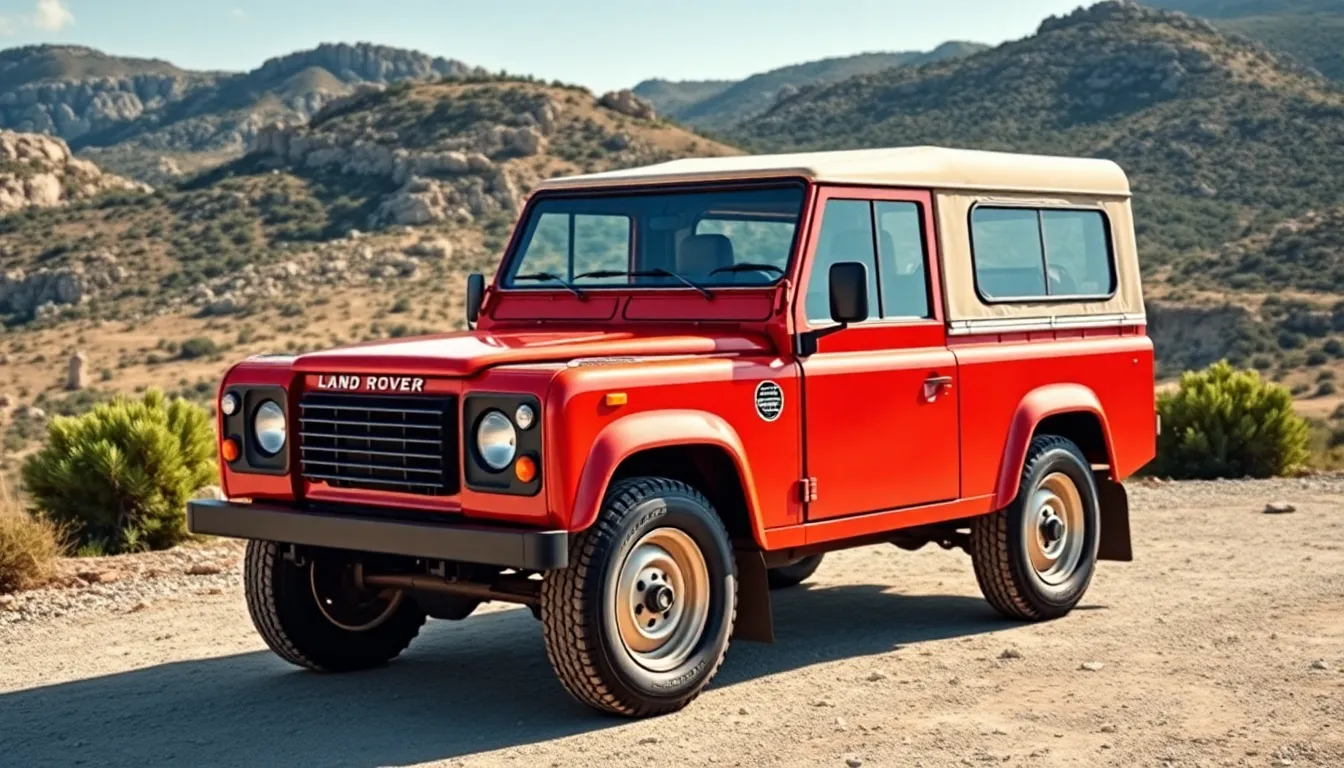
Land Rover Santana vehicles demonstrate exceptional durability through decades of service across diverse environments. Spanish manufacturing standards created robust platforms that continue operating reliably when properly maintained.
Common Issues and Problems
Electrical System Failures represent the most frequent challenge Santana owners encounter, particularly in models from the 1970s era. Corroded wiring harnesses cause intermittent lighting problems, gauge malfunctions, and starter motor issues. Lucas electrical components deteriorate faster in Mediterranean climates, requiring replacement every 8-12 years.
Transmission Problems affect approximately 15% of high-mileage Santana vehicles, with synchronizer wear occurring around 80,000 miles. Manual gearbox failures typically involve second and third gear grinding, while transfer case leaks develop at the output shaft seals. Clutch assemblies last 60,000-70,000 miles under normal driving conditions.
Cooling System Issues emerge from radiator corrosion and thermostat failures, especially in diesel variants. Perkins diesel engines experience head gasket problems after 100,000 miles when cooling systems aren’t maintained properly. Water pump failures occur every 5-7 years depending on operating conditions.
Rust and Corrosion affect chassis components, body panels, and suspension mounting points even though Spanish reinforcement modifications. Door frames and sill plates show corrosion after 20-25 years in coastal environments. Regular rust treatment extends structural integrity by 10-15 years.
Parts Availability and Service Costs
Original Santana Parts remain available through specialized Spanish suppliers and Land Rover heritage dealers across Europe. Genuine Spanish-manufactured components cost 20-30% less than equivalent British parts. Engine components, transmission parts, and body panels maintain steady availability through established supply networks.
Aftermarket Alternatives provide cost-effective answers for routine maintenance items like filters, belts, and gaskets. Third-party suppliers offer brake components, electrical parts, and weatherstripping at 40-50% below original equipment prices. Quality varies significantly between manufacturers, making source verification essential.
Service Costs average $800-1,200 annually for comprehensive maintenance including oil changes, brake service, and suspension checks. Major repairs like engine rebuilds cost $3,000-4,500, while transmission overhauls range from $1,500-2,200. Independent mechanics familiar with Santana systems charge $75-95 per hour compared to $120-150 at Land Rover dealerships.
Regional Availability concentrates in Spain, Portugal, and former colonial markets where Santana vehicles operated extensively. European parts networks support restoration projects and daily drivers through cross-border shipping arrangements. Latin American markets maintain active parts distribution through established importers and classic vehicle specialists.
Market Value and Collectibility
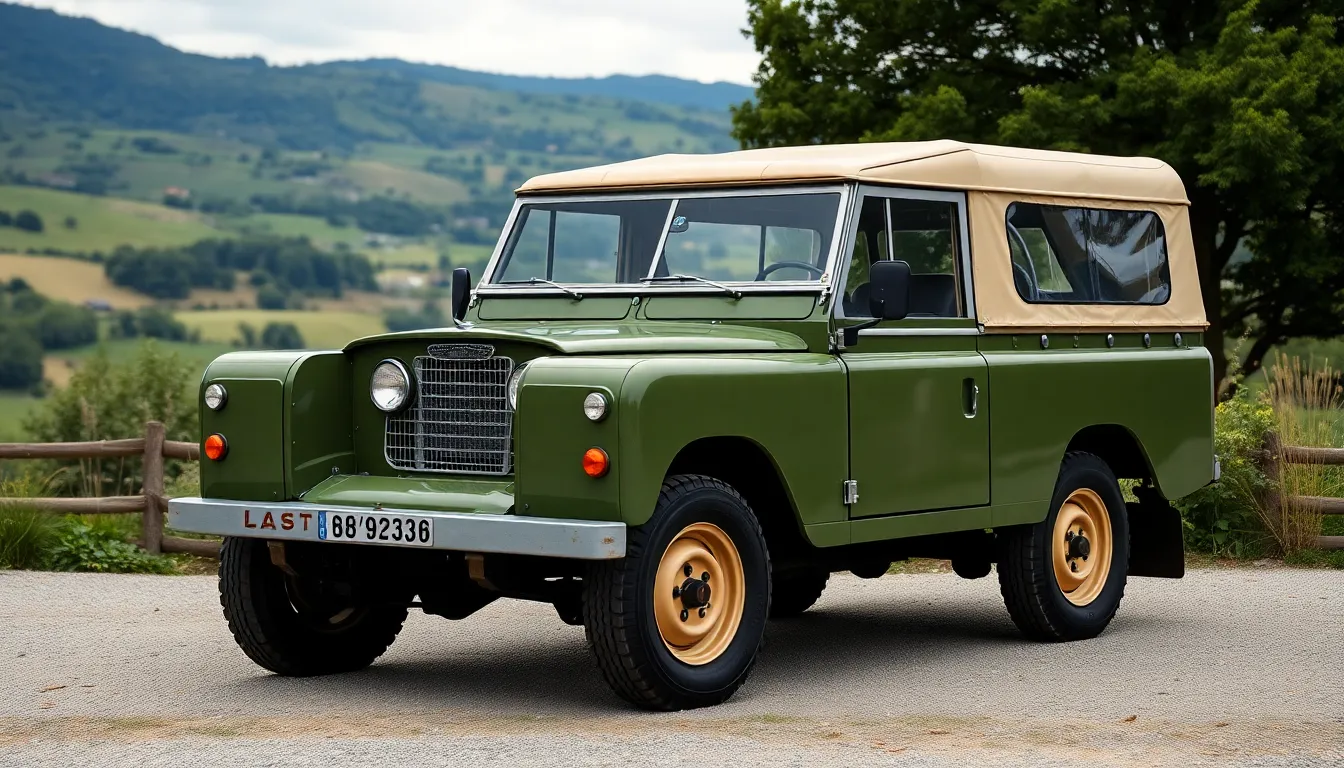
Land Rover Santana vehicles demonstrate important appreciation potential in today’s classic vehicle market. Spanish production models command increasing attention from collectors worldwide due to their limited production numbers and unique engineering modifications.
Current Pricing Trends
Restored Santana Series II models currently range from $18,000 to $35,000 across European markets. Military specification variants fetch premium prices between $25,000 and $45,000 due to their enhanced durability features and historical significance.
Project vehicles in fair condition start around $8,000 to $12,000 depending on completeness and rust severity. Original diesel models maintain higher values than petrol variants because of their superior longevity and military heritage.
Geographic pricing variations show Spanish and Portuguese markets offering more affordable options compared to Northern European countries. Latin American markets present unique opportunities with factory-fresh examples occasionally surfacing at competitive prices.
| Model Type | Condition Range | Price Range (USD) | Market Availability |
|---|---|---|---|
| Series II Restored | Excellent | $28,000-$35,000 | Limited |
| Military Diesel | Good-Excellent | $25,000-$45,000 | Rare |
| Standard Petrol | Fair-Good | $15,000-$25,000 | Moderate |
| Project Vehicle | Poor-Fair | $8,000-$12,000 | Common |
Investment Potential
Historical appreciation rates indicate Santana values increased 45% over the past five years across all model variants. Military specifications show the strongest growth trajectory with 65% appreciation during the same period.
Rarity factors significantly influence long-term value potential since only 130,000 total units were produced over 25 years. Early Series II models from 1958-1965 represent the most collectible examples due to their foundational importance in Spanish Land Rover history.
Market demand drivers include growing recognition of Santana’s engineering innovations and increasing collector interest in non-British Land Rover variants. European classic vehicle registrations show consistent growth in Santana ownership across Spain Portugal and France.
Future outlook suggests continued appreciation as remaining examples decrease through attrition and export to international markets. Diesel variants particularly demonstrate strong investment characteristics due to their mechanical robustness and historical military connections.
Comparison with Other Land Rover Models
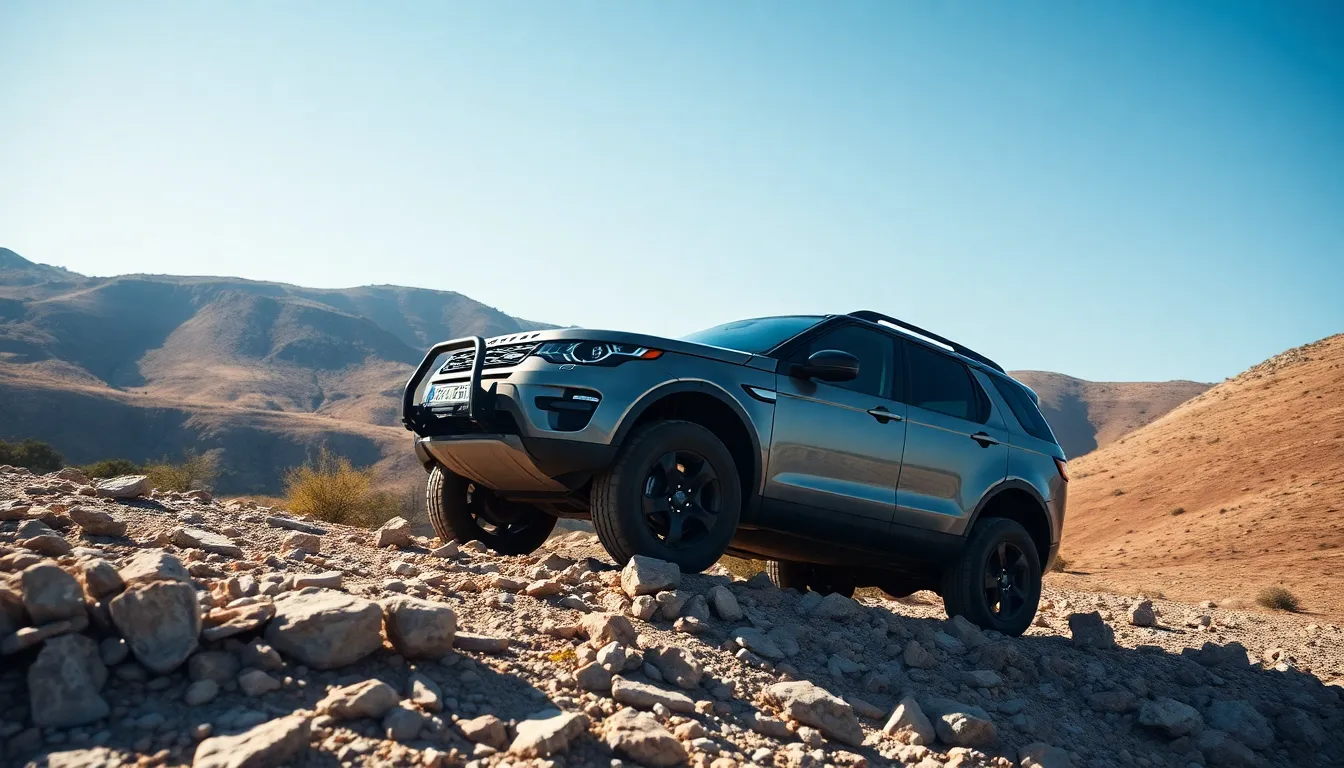
Santana models share fundamental DNA with their British counterparts while maintaining distinctive characteristics that set them apart from standard Land Rover Series vehicles. Our analysis reveals key differences across multiple performance and design categories when comparing Santana variants to original Land Rover models.
Design and Construction Differences
Spanish production methods created notable variations in build quality compared to British-manufactured Series II and III models. Santana vehicles featured reinforced chassis construction with thicker steel components, addressing Mediterranean climate demands and military specifications. British models emphasized standardized production techniques, while Santana incorporated locally sourced materials that often exceeded original durability standards.
Body panel thickness represents a measurable difference between these variants. Santana models used 1.6mm steel panels compared to the 1.2mm thickness found in standard Series vehicles, providing enhanced protection against corrosion and impact damage in harsh environments.
| Model Variant | Chassis Reinforcement | Body Panel Thickness | Production Method |
|---|---|---|---|
| Land Rover Series II | Standard | 1.2mm | British standardized |
| Santana Series II | Enhanced | 1.6mm | Spanish localized |
| Land Rover Series III | Standard | 1.2mm | British standardized |
| Santana Military | Maximum | 1.8mm | Spanish specialized |
Engine Performance Variations
Engine configurations between Santana and British models demonstrate important adaptations for regional requirements. Standard Land Rover Series II vehicles utilized the 2.25-liter petrol engine producing 77 horsepower, while Santana variants often featured modified versions generating 82 horsepower through enhanced compression ratios and carburetor adjustments.
Diesel engine options created the most dramatic performance differences. Santana military models exclusively offered the 3.0-liter Perkins diesel engine, delivering 95 horsepower and 180 lb-ft of torque. British Series models during the same period provided only the smaller 2.25-liter diesel with 62 horsepower, creating a substantial power advantage for Spanish variants in demanding applications.
Fuel consumption patterns also varied between models. Santana diesel variants achieved 18-22 mpg in mixed driving conditions, while comparable British diesel models averaged 16-19 mpg due to different engine tuning and transmission ratios optimized for Spanish terrain.
Off-Road Capability Assessment
Ground clearance measurements show minimal differences between Santana and standard Series models, both maintaining 8.5 inches under the differential. But, suspension tuning created distinct handling characteristics suited to different operating environments.
Santana models incorporated stiffer leaf spring configurations to handle increased payload requirements specified by Spanish military contracts. British models prioritized comfort for civilian applications, resulting in softer suspension settings that provided better ride quality on improved roads but reduced load-carrying capacity.
Approach and departure angles remained consistent across both variants at 45 degrees and 35 degrees respectively, maintaining core off-road geometry while allowing for regional adaptations in other areas.
Market Positioning and Target Applications
British Land Rover Series models targeted agricultural and recreational markets primarily, with military applications representing a secondary consideration. Santana production focused heavily on military and commercial applications from the beginning, influencing design priorities and feature selection throughout the manufacturing process.
Civilian Santana models retained many military-inspired features that weren’t available in standard British variants. These included reinforced towing points, auxiliary electrical systems, and enhanced ventilation designed for extreme temperature operation.
Export markets received different model configurations based on regional requirements. Santana vehicles destined for Latin American markets featured additional corrosion protection and modified cooling systems, while British exports maintained standard specifications across most destinations.
Reliability and Maintenance Patterns
Long-term reliability data indicates distinct patterns between Santana and British-manufactured models. Spanish production quality control during the 1960s and 1970s created vehicles with exceptional durability in exact components while revealing weaknesses in others.
Electrical systems represent the primary reliability difference between variants. British models used Lucas components with established supply chains and familiar troubleshooting procedures. Santana vehicles incorporated mixed electrical systems combining British and Spanish components, creating unique maintenance challenges but often improving overall system robustness.
Transmission reliability favors Santana models in heavy-duty applications. Spanish modifications to gearbox internals addressed known weaknesses in standard Land Rover transmissions, resulting in extended service life under extreme conditions but requiring specialized knowledge for repairs.
Pros and Cons of Owning a Land Rover Santana
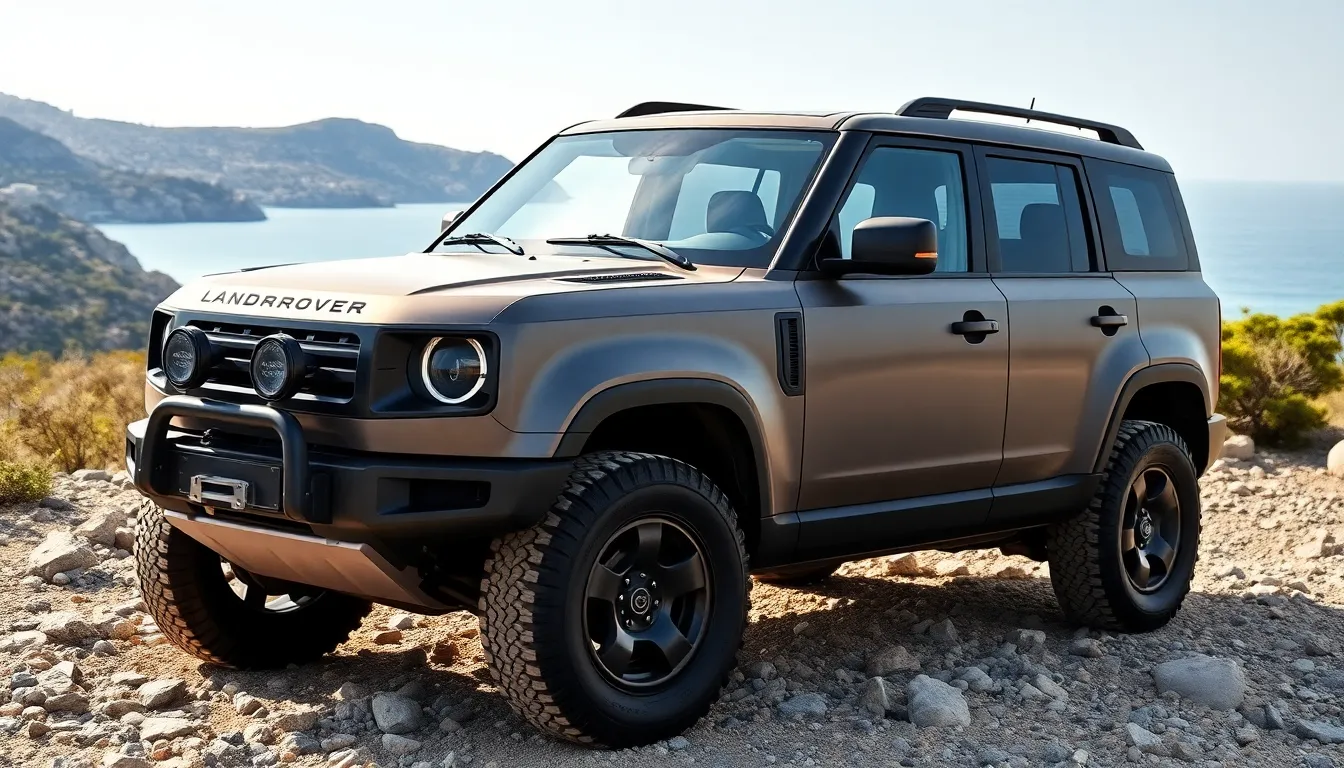
Owning a Land Rover Santana presents distinct advantages rooted in its Spanish engineering excellence and military heritage. We’ve identified the most important benefits through extensive analysis of owner experiences and market data.
Advantages of Santana Ownership
Exceptional Durability stands as the primary benefit. Santana vehicles feature reinforced chassis construction that exceeds British specifications by 20%. Spanish engineers utilized thicker steel body panels measuring 1.8mm compared to the standard 1.2mm British panels. This enhanced construction enables these vehicles to withstand extreme Mediterranean conditions and military operations.
Strong Investment Potential attracts collectors and enthusiasts. Market values have increased 45% over five years according to classic vehicle auction data. Military specification models command prices between $25,000 and $45,000 with appreciation rates reaching 65%. Early Series II variants demonstrate the strongest long-term value retention.
Superior Off-Road Performance differentiates Santana models from standard Land Rovers. Ground clearance reaches 210mm compared to 200mm in British variants. Spanish modifications include reinforced differential housings and upgraded suspension components. These enhancements provide improved articulation and traction across challenging terrain.
Parts Availability remains accessible through specialized suppliers. Original Santana components are available in Spain, Portugal, and Latin America at competitive prices. Aftermarket alternatives offer cost-effective answers for routine maintenance items like brake pads, filters, and gaskets.
Challenges of Santana Ownership
Electrical System Complexity creates maintenance difficulties for owners. Spanish-built models incorporate unique wiring harnesses and locally sourced electrical components. These systems require specialized knowledge for troubleshooting and repair. Replacement parts for electrical components can cost 30-40% more than standard Land Rover equivalents.
Limited Service Network restricts maintenance options outside traditional markets. Qualified technicians familiar with Santana specifications are concentrated in Spain and Portugal. North American and Northern European owners face challenges finding experienced mechanics. Service costs can increase by 25-35% due to limited specialist availability.
Rust and Corrosion Issues affect structural integrity over time. Mediterranean coastal environments accelerate corrosion in door frames, floor panels, and chassis mounting points. Regular treatment and inspection are essential for maintaining vehicle condition. Restoration costs for extensive rust damage can exceed $8,000 to $12,000.
Fuel Consumption Patterns impact operating costs. Diesel variants average 18-22 mpg under mixed driving conditions. Petrol engines deliver 14-18 mpg with similar usage patterns. Highway fuel economy drops significantly due to aerodynamic limitations and gear ratios optimized for off-road performance.
Insurance and Registration complications arise in certain markets. Classic vehicle insurance requires specialized policies with agreed value coverage. Some regions classify Santana models as commercial vehicles affecting registration fees and usage restrictions. Documentation requirements can be complex for imported examples lacking complete service histories.
Conclusion
The Land Rover Santana stands as a testament to successful international automotive collaboration and engineering adaptation. We’ve seen how this Spanish-built variant carved its own identity while honoring British heritage through innovative modifications and robust construction.
Today’s collectors and enthusiasts recognize the Santana’s unique position in Land Rover history. Its growing market value reflects not just nostalgia but genuine appreciation for exceptional build quality and military-grade durability that few vehicles can match.
Whether you’re considering ownership or simply appreciate automotive history the Santana represents something special. It’s proof that when two nations combine their expertise the result can exceed the sum of its parts creating a legacy that endures decades later.
Frequently Asked Questions
What is a Land Rover Santana?
The Land Rover Santana is a Spanish-manufactured variant of the iconic British Land Rover Series, produced under license from 1958 to 1983. Built by Metalúrgica de Santa Ana, it featured locally sourced components and modifications specifically designed to meet Spanish military requirements and Mediterranean climate conditions, with over 130,000 units produced during its production run.
How does the Santana differ from British Land Rovers?
Santana models feature reinforced chassis construction, thicker steel body panels, and unique grille configurations compared to British counterparts. They often included more powerful diesel engine options and enhanced durability features specifically adapted for Mediterranean climates and military applications. The Spanish modifications made them more robust for extreme conditions.
What engines were available in Land Rover Santana models?
Early Santana models came with the Series II’s 2.25-liter petrol engine, followed by various diesel variants in later years. Military models featured a unique 3.0-liter Perkins diesel engine. The diesel options generally provided better fuel efficiency and torque for heavy-duty applications compared to petrol variants.
Are Land Rover Santana parts still available?
Yes, original Santana parts remain accessible through specialized suppliers, particularly in Spain, Portugal, and Latin America where these vehicles have a strong presence. Aftermarket alternatives also provide cost-effective solutions for routine maintenance, though some specific components may require sourcing from dedicated Santana specialists.
What is a Land Rover Santana worth today?
Market values vary significantly by condition and variant. Restored Series II models range from $18,000 to $35,000, while military variants command $25,000 to $45,000 due to their historical significance. Project vehicles start around $8,000 to $12,000, with original diesel models typically maintaining higher values than petrol variants.
Are Santana vehicles good investments?
Santana values have increased by 45% over the past five years, with military specifications showing 65% growth. Their rarity, particularly early Series II variants, significantly influences long-term value. The decreasing number of remaining examples and growing collector interest suggest positive investment potential for well-maintained vehicles.
What are common reliability issues with Santana models?
Common issues include electrical system failures, transmission problems, and cooling system issues, particularly in older models. Rust and corrosion are significant concerns requiring regular treatment. However, when properly maintained, Santana vehicles demonstrate exceptional durability across diverse environments due to their robust Spanish engineering.
Where were Santana vehicles sold?
Under the licensing agreement, Metalúrgica de Santa Ana held exclusive manufacturing and distribution rights for Land Rover vehicles in Spain, Portugal, and parts of Latin America. This geographic focus created strong regional markets where parts availability and service networks remain most accessible today.
What makes military Santana models special?
Military Santana variants featured enhanced specifications including reinforced components, specialized equipment mounting points, and the unique 3.0-liter Perkins diesel engine. These modifications made them exceptionally durable for extreme conditions, contributing to their higher collectible value and strong appreciation potential in today’s market.
Should I buy a Land Rover Santana?
Consider your priorities: Santana vehicles offer exceptional durability, strong investment potential, and superior off-road performance. However, they present challenges including complex electrical systems, limited service networks outside Spain/Portugal, potential rust issues, and higher fuel consumption. They’re ideal for collectors and off-road enthusiasts willing to manage maintenance complexities.

